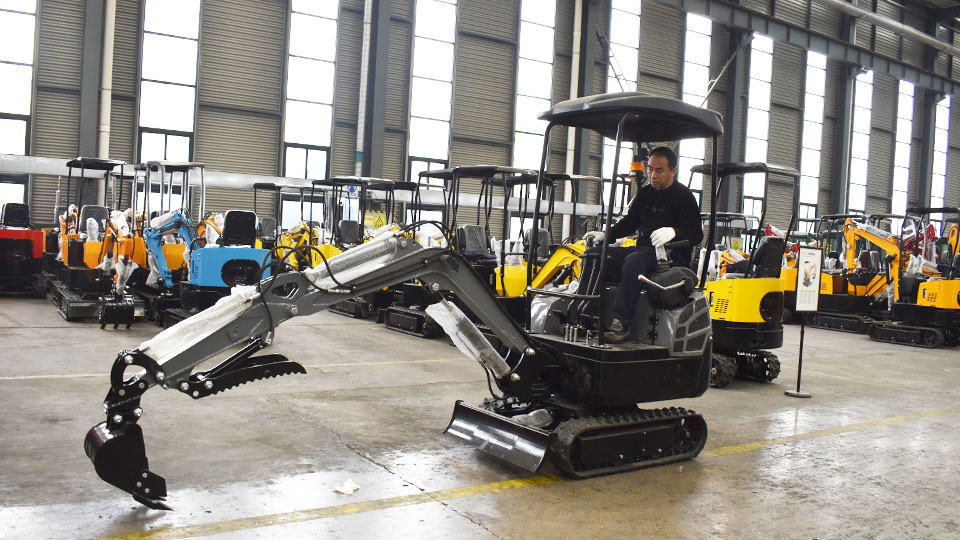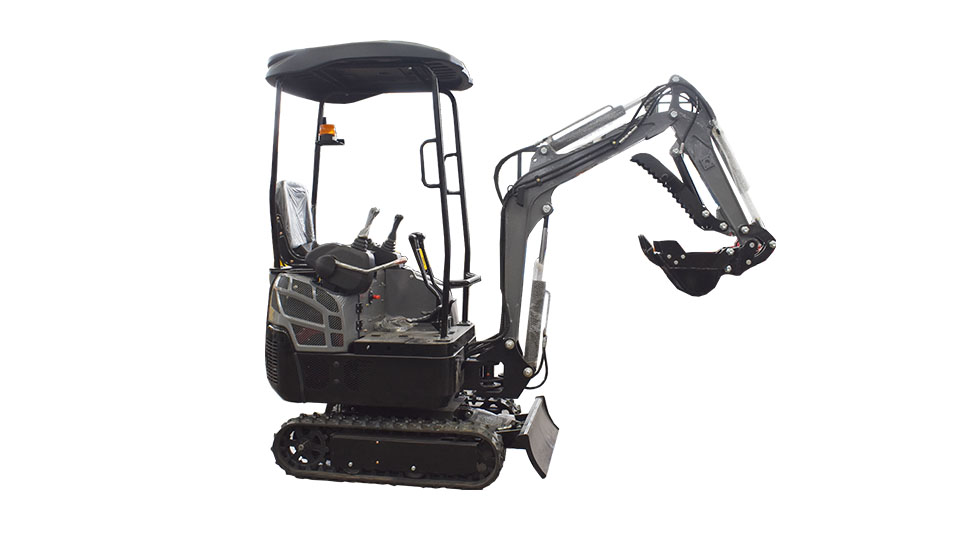Excavator Market Boom: What's Driving Global Demand in 2025?
The global excavator market is experiencing a profound boom, transitioning from a cyclical sector driven purely by immediate construction demand to a high-growth technology segment. In 2025, the market is poised to reach an estimated value of USD $81-85$ billion, underpinned by a compound annual growth rate (CAGR) projected to exceed $5.5\%$ through the decade. This surge is not merely a rebound from past downturns but a structural shift fueled by a convergence of unprecedented global infrastructure investment, stringent environmental mandates, and disruptive technological advancements that redefine the machine's role from a simple digging tool to an intelligent, autonomous, and sustainable asset.
This technical article dissects the primary macroeconomic and technological forces propelling this demand, providing a detailed analysis of regional market dynamics and the innovations that are shaping the competitive landscape for manufacturers and end-users alike.

I. The Macroeconomic Foundations: A Tectonic Shift in Global Investment
The primary drivers of excavator demand in 2025 are rooted in massive, state-backed, and long-term public spending initiatives globally. This creates a predictable and sustained demand curve, a departure from the volatile, short-term cycles of previous decades.
A. Infrastructure-Led Public Spending Surge
Infrastructure development remains the single most impactful demand catalyst. Governments worldwide are strategically deploying capital to modernize aging assets and build new sustainable networks.
North America’s Renaissance: The U.S. Infrastructure Investment and Jobs Act (IIJA), a colossal $1.2 trillion commitment, is directly translating into sustained demand for earthmoving equipment. Focus areas include the renovation of aging bridges and roads, expansion of broadband infrastructure, and upgrading of water utilities. This has boosted sales of both large crawler excavators for major highway work and compact/mini excavators for urban utility projects.
Asia-Pacific's Urbanization Megaprojects: Led by China and India, the Asia-Pacific region commands nearly $50\%$ of the global excavator market. Rapid urbanization mandates continuous development of new highways, rail lines, and 'smart cities.' In countries like Indonesia, major projects like the new capital city (Nusantara) require thousands of excavators, sustaining a high-volume market for large-capacity models.
Europe's Renewal and Green Deal: European demand, particularly in Germany and France, is driven by the European Green Deal and extensive urban infrastructure renewal. This region is projected to be the fastest-growing market, with a CAGR exceeding $8\%$, primarily due to the accelerated adoption of technologically advanced, low-emission machinery necessary to comply with strict regulatory frameworks.
B. Mining and Energy Transition Demand
The global shift towards electric vehicles (EVs) and renewable energy has created a cascading demand for critical minerals, revitalizing the mining sector—a key consumer of heavy-duty excavators.
Critical Mineral Extraction: Excavators are indispensable in the extraction of lithium, copper, and iron ore, essential components for battery manufacturing and electrical infrastructure. This resurgence is propelling sales of large-tonnage crawler excavators with superior power-to-weight ratios and enhanced durability.
Oil & Gas and Renewable Site Prep: While traditional energy sectors maintain demand for earthmoving machinery for pipeline and site work, the build-out of large-scale renewable energy infrastructure (wind and solar farms) necessitates extensive site preparation, driving consistent demand for mid-to-large-size excavators.
C. The Rental Market Revolution
The growing preference for rental and leasing models—a trend gaining significant traction in mature markets like North America and Europe—is fundamentally changing how construction firms access equipment.
Capital Expenditure vs. Operating Expense: Renting allows contractors, especially smaller and mid-sized firms, to access the latest, technologically-advanced and emissions-compliant equipment without the heavy capital expenditure and balance sheet impact of outright ownership.
Fleet Modernization: Rental companies act as a critical buffer, driving volume demand for new equipment to keep their fleets modern and compliant with the latest EU Stage V and U.S. EPA Tier 4 Final emission standards. This consistent turnover of machinery helps to fuel the secondary (used) equipment market, completing a robust and dynamic demand cycle.
II. Technological Disruption: The Excavator as a Smart Asset
The second, equally powerful demand driver is the wholesale integration of advanced digital and power technologies. Excavators are no longer defined solely by their hydraulic power but by their intelligence, efficiency, and sustainability.
A. Electrification and Hybridization: The Green Imperative ��
Stringent environmental regulations are the most potent non-economic factor forcing market evolution. The need to meet emissions standards and comply with urban noise ordinances is accelerating the shift to alternative powertrains.
Mini Excavator Pioneer: The mini/compact excavator segment is leading the charge, particularly in urban and noise-sensitive areas. Electric mini-excavators offer zero tailpipe emissions and significantly reduced noise, making them ideal for indoor, residential, and night-time work. This segment is expected to see the highest market share in electric offerings.
Electric Market Growth: The overall electric construction equipment market, including excavators, is projected to surge from approximately USD $16.3$ billion in 2025 with an aggressive CAGR over $20\%$. While Europe's regulatory environment makes it a strong adopter, China accounts for a vast majority ($\approx 80\%$) of global electric construction equipment sales, demonstrating a rapid maturation of technology and cost competitiveness in the Asia-Pacific region.
Hybrid Systems: For larger models where full battery-electric operation remains a challenge due to energy density and charging logistics, hybrid-electric systems are gaining ground. These systems use kinetic energy recovery during boom lowering and slewing to supplement the diesel engine, providing significant fuel savings (up to 20-30%) and reduced emissions without sacrificing heavy-duty performance.
B. Automation, AI, and Machine Control ��
The integration of smart technology is transforming operator efficiency, safety, and precision. This technology is moving from a premium feature to a standard offering, even in mid-tier models.
|
Technology Feature |
Technical Impact |
Operational Benefit (2025) |
|
3D Grade Control Systems |
Integration of GPS (GNSS), RTK, and total station sensors. |
Centimeter-level accuracy in digging and grading, eliminating the need for constant manual grade checking and rework. |
|
AI Dig Path Optimization |
AI algorithms monitor ground conditions, material density, and hydraulic pressure. |
Recommends or directly executes the most fuel-efficient and fastest dig cycles, reducing fuel consumption and operational time. |
|
Autonomous & Semi-Autonomous Modes |
Combination of Lidar, radar, and stereo vision for real-time environment mapping. |
Enables repetitive tasks (e.g., trenching, loading) without continuous operator input, addressing the skilled labor shortage and improving safety in hazardous environments. |
|
Virtual Wall/Geofencing |
GPS-based software defines exclusion zones. |
Prevents the boom or bucket from striking obstacles (e.g., power lines, buildings) or over-digging, crucial for congested urban sites. |
C. Telematics and Predictive Maintenance
Advanced telematics platforms (IoT integration) are moving beyond simple location tracking to serve as full-spectrum fleet management and diagnostic tools.
Real-time Diagnostics: Sensors monitor key component health (hydraulic pressure, engine vibration, thermal data) in real-time. This allows fleet managers to transition from reactive to predictive maintenance, scheduling service before component failure. This shift drastically reduces unplanned downtime, a major cost for contractors.
Utilization Analytics: Telematics provides granular data on idle time, fuel burn per cubic meter of material moved, and utilization rates. This data is used to optimize jobsite logistics, operator training, and ultimately, the total cost of ownership (TCO). For large fleet owners, a 5-10% reduction in idle time across hundreds of machines translates to millions in annual savings.

III. Regional Market Dynamics: Hotspots of Demand
The global market's strength is a mosaic of different regional drivers, each prioritizing specific excavator types and technological features.
A. Asia-Pacific (APAC): Volume and Scale ��
Market Share: Dominates the global market (around $48\%$ market share).
Key Drivers: Unprecedented urbanization, government-led infrastructure investment, and rapid industrialization.
Equipment Focus: High demand across all classes, with a strong emphasis on large crawler excavators for mining and massive highway projects, and mid-size excavators for residential and commercial construction. China’s focus on localized, cost-competitive electric models is a defining characteristic.
B. Europe: Compliance and Compactness ����
Market Growth: Fastest-growing region (CAGR $\approx 8.6\%$).
Key Drivers: Stringent EU Stage V emissions standards, dense urban construction, and the push for "green construction" under the European Green Deal.
Equipment Focus: Heavy preference for mini and compact excavators (for maneuverability in tight city centers) and wheeled excavators (for road-friendly travel between sites). Europe is the leading region for the adoption of electric and hybrid technologies due to regulatory mandates.
C. North America: Replacement and Technology Integration ��������
Market Profile: Stable, mature market driven by the IIJA and cyclical fleet replacement.
Key Drivers: Long-term infrastructure funding, a high average age of existing equipment fleets, and a push to mitigate skilled labor shortages.
Equipment Focus: Strong demand for mid-to-large-size crawler excavators for highway and utility work. The market is defined by rapid integration of advanced technology, with 3D machine control and telematics rapidly becoming standard expectations on new machines to maximize efficiency and mitigate labor gaps.
IV. The Competitive Landscape and Future Outlook
The market boom is intensifying competition and forcing traditional manufacturers to evolve their business models dramatically.
A. The Rise of Chinese OEMs
Brands like SANY, XCMG, and LiuGong are disrupting the market by offering competitive pricing (often 20-30% lower than premium brands) and aggressive R&D into electric and large-scale machinery. Their strategy, initially focused on domestic and emerging markets (Africa, Southeast Asia), is now gaining serious traction in established markets through strong export growth and localized manufacturing.
B. Manufacturer Innovation Focus
Market leaders like Caterpillar, Komatsu, and Volvo are maintaining their dominance by focusing on the premium technology segment—investing heavily in full autonomy, AI-powered predictive maintenance, and hydrogen internal combustion engine (HICE) prototypes for the largest excavators (over 40-ton class) where battery-electric solutions are still impractical. Their competitive edge is shifting from raw power to Total Cost of Ownership (TCO), driven by fuel efficiency, minimal downtime, and high resale value.
C. Challenges to Sustained Growth
While the outlook is robust, the market faces structural challenges that could temper growth:
Supply Chain Volatility: Fluctuations in the cost and supply of key raw materials (steel) and critical components (semiconductors, hydraulic valves) continue to pose risks for production continuity and machine pricing.
High Upfront Cost of Technology: The premium associated with advanced electric powertrains and complex automation systems can initially deter some small-to-mid-sized buyers, although the lower operating expenses typically offset this over the machine’s lifespan.
Infrastructure Readiness: The lack of widespread, high-capacity charging infrastructure presents a significant logistical bottleneck for large-scale adoption of electric excavators outside of urban centers.
Conclusion: A Paradigm Shift in Earthmoving
The excavator market boom of 2025 is a complex tapestry woven from macroeconomic necessity and technological ingenuity. The global commitment to infrastructure renewal and the energy transition is providing the economic foundation, guaranteeing sustained demand for years to come. Simultaneously, the forced evolution toward electrification, automation, and AI-driven intelligence is transforming the machine itself, ensuring that the modern excavator is not just a high-horsepower tool, but a smart, data-driven, and environmentally compliant investment. For industry stakeholders, the future is clear: success will belong to those who not only acquire the necessary equipment but strategically adopt the intelligent technologies that maximize efficiency, meet rigorous environmental standards, and future-proof their operations in an increasingly competitive global landscape. The age of the smart excavator has fully arrived.
Post time:Sep-25-2020
